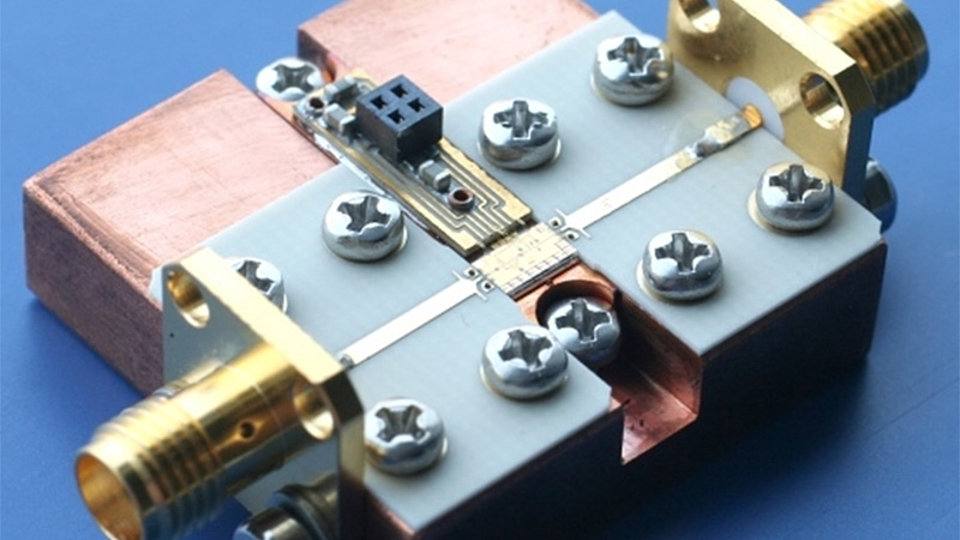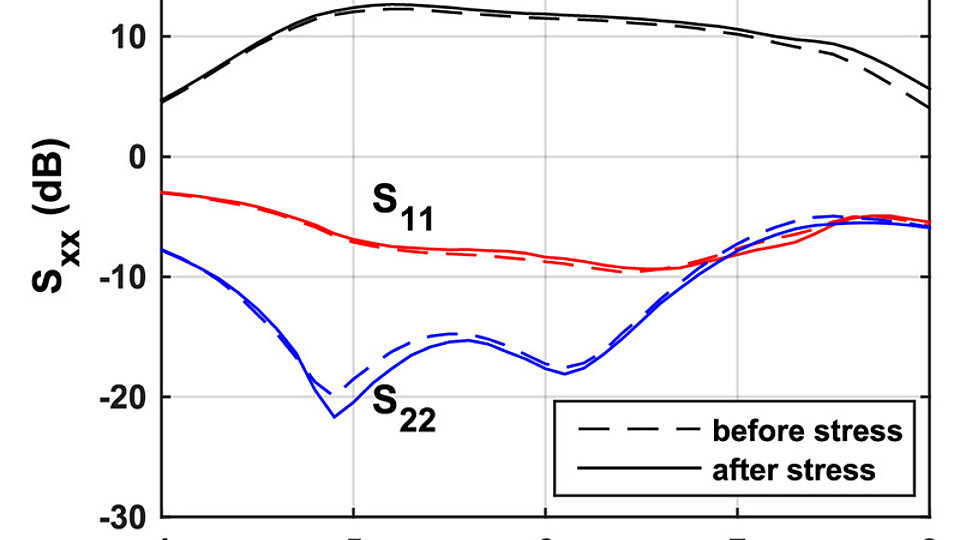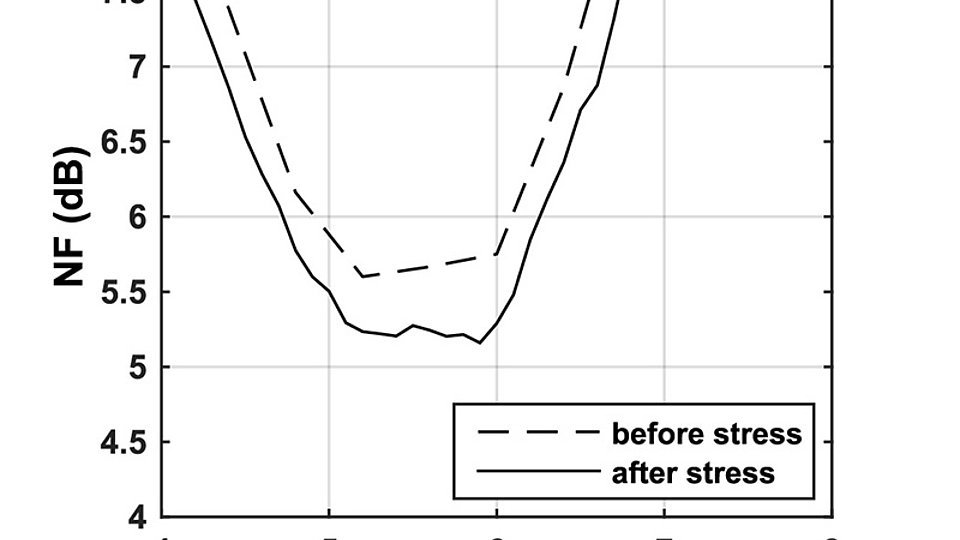Highly robust GaN-HEMT based low-noise amplifiers
Low-noise amplifiers (LNAs) are ideally the first building blocks following the antenna in a radio receiver. The purpose of these amplifiers is to amplify very weak signals without degrading signal quality by adding too much noise. Thus, LNAs are designed to amplify signals of very low powers, and should also dissipate low power. But in reality, also signals at higher power levels than expected will be received. A typical commercial LNA will need to be protected against these overdrive powers, as it may be destroyed when the incident power exceeds 100 mW for a few microseconds. However, protection circuits attenuate the received signal and thereby lower the signal-to-noise ratio.
The Brandenburg University of Technology Cottbus-Senftenberg (BTU) and the Ferdinand-Braun-Institut, Leibniz-Institut für Höchstfrequenztechnik (FBH) have proposed a new concept to protect LNAs for input overdrive signals.
It was shown in recent years, that the maximum input powers of LNAs can be increased from the typical 100 mW to about 10 W if Gallium-Nitride-based electronics are combined with a circuit topology proposed by FBH. Now, we have significantly boosted the maximum input power again. Basically, a series connection of GaN transistors allows us to increase the effective breakdown voltage at the LNA input. The maximum input overdrive power increases accordingly.
A first prototype was realized in the monolithically integrated GaN HEMT process of the FBH. In order to measure the chip at powers up to 30 W, it was mounted on a copper block and integrated into a text fixture (Fig. 1).
The improvement in robustness was confirmed by measurement. The LNA survived powers of 20 W. Post-stress measurement confirmed that the LNA performance is not degraded due to the overdrive power. S-parameters remain unaffected (Fig. 2), while noise figure even shows better performance after the stress (Fig. 3).
These results obtained by BTU and FBH were first presented at the IEEE International Microwave Symposium 2015 in Phoenix and mark a new record in terms of LNA robustness.
Publication
C. Andrei, O. Bengtsson, R. Doerner, S.A. Chevtchenko, M. Rudolph, "Robust Stacked GaN-Based Low-Noise Amplifier MMIC for Receiver Applications," IEEE MTT-S Intl. Microwave Symp. Dig., Phoenix, USA, May 17-22


